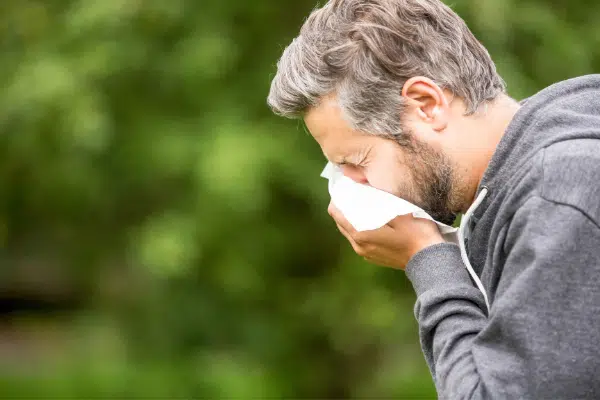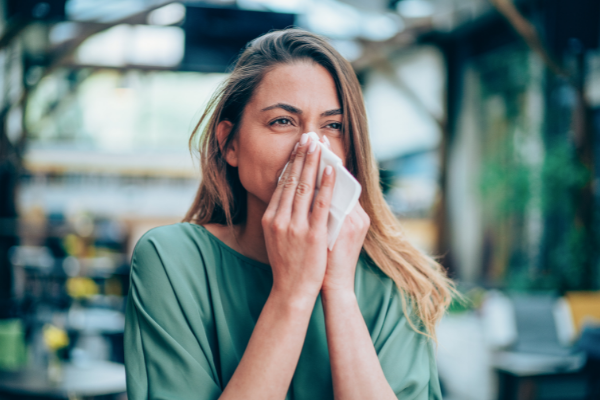Fall and spring are the best seasons when it comes to weather. The temperature is neither too hot nor too cold, unlike the scorching summers and freezing winters. Additionally, the weather is ideal for cozying around in a warm sweater, comfy flip-flops, and a warm cup of hot chocolate. However, there is one major setback for about 60 million Americans: seasonal allergies.
Allergies are alarmingly common during fall and spring. Their symptoms are strikingly similar, but their causes are different. Here is a comprehensive overview of spring and fall allergies, including their causes and remedies.
Spring Allergy Causes
Tree pollen is a common allergen. Trees come alive during the spring to take advantage of the coming friendly weather. Trees everywhere release pollens to spur the growth of more trees. The pollen can travel for hundreds or thousands of miles, depending on the wind’s strength and velocity. It can also get into the house through open windows and the HVAC system.
Grass pollen is also a common trigger for allergies. The problem is just as bad, considering that there is grass everywhere. However, grass pollen is only a problem when the grass grows tall, and some types of grass pollens are worse than others.
Some days are better than others for people allergic to spring pollen. The pollen count is especially high when it is warm and windy, but it decreases when it is cool and calm. Tree pollen lingers around from February to May, and grass pollen can last from June through the end of summer.
Fall Allergy Causes
Allergic reactions are fewer during fall, but they still number as high as 40 million people across the country. Research shows that three in four people who are allergic to spring pollens are also allergic to ragweed, Fall’s biggest culprit.
Fall allergies are mostly caused by pollens released by weeds and other common plants. Weeds come alive during fall, thanks to the refreshing rain and overall conducive weather. Ragweed is the biggest culprit, as mentioned. Other trigger plants that produce allergic pollens include:
- Pigweed
- Cocklebur
- Burning Bush
- Tumbleweed
- Russian Thistle
- Mugwort
- Sagebrush
- Lamb’s Quarters
Ragweed (and these other weeds) is common across North America. Ragweed is especially common in the Midwest and East Coast regions. One ragweed plant can produce more than one billion pollens, making them almost inescapable. It blooms from August to November, but the problem persists for a shorter period than that. Pollen levels are especially high from the start to the middle of September.
Mold is also a major allergic trigger during fall. Mold thrives in moist and humid weather, and fall provides the ideal conditions. Consequently, many of the leaves falling off trees sport mold colonies, as do many crevices in residential houses — mold growth spreads across the whole of North America.
Mold produces millions of spores that can spread out for thousands of miles, depending on the weather. Mold spores are incredibly resilient against frost and other extreme weather. Consequently, the problem can persist for months or years — essentially as long as the mold colony is still growing.
Symptoms
The causes of spring and fall allergies are distinctly different, as explained. However, the symptoms are strikingly similar. They include:
-
Nasal congestion (blocked nose)
- Sneezing
- Itchy throat
- Runny nose
- Headaches over the sinuses
- Irritated eyes
- Postnasal drip
- Cough
- Wheezing or shortness of breath
The severity of these symptoms can vary from mild to extreme, depending on your sensitivity. Additionally, some people may experience extra symptoms, such as skin irritation and inflammation. It is important to get every symptom addressed if you are unsure that it is an allergic reaction.
Staying Safe During Fall & Spring
Trees, grass, mold, and weeds produce billions of pollens throughout spring and fall. These pollens can spread throughout North America and linger around for months, as explained. The danger seems almost inescapable. Fortunately, there are several ways to stay safe, including:
Limit Time Spent Outdoors
It is advisable to spend more time indoors if you suffer extreme allergic reactions during fall and spring. This is especially advisable when the air is heavily concentrated with pollen. As such, monitor your weather stations to find out the pollen count for that particular day before venturing out. It also helps to cover your nose and mouse using a face mask and your eyes using glasses if you must go out.
Shower Frequently
Pollen sticks to the skin and clothes, and it can pose a significant risk when it adds up. Consequently, it is advisable to shower frequently during allergy season, especially after spending time outdoors. Ensure that you use an anti-allergenic bathing soap and rinse yourself thoroughly with clean water. You can also wear an extra layer of clothes to protect your skin.
Install a Home Filtration System
Pollen dust is microscopic, making it invisible to the naked eye. It is also small enough to pass through open cracks in your house and come in through the HVAC system. Consequently, it is advisable to install a filtration system in your HVAC. Choose a multi-purpose filtration system that can filter out pollen, dust, and other microbial particles that can trigger allergic reactions and other medical complications. If this is not possible you can purchase a HEPA filter for the rooms in your home you spend the most time like the bedrooms and living rooms.
Get Medical Help
Prevention is good, but it doesn’t always work. Consequently, it is important to get medical help when you develop an allergic reaction.
Medicines such as decongestants and antihistamines will help relieve a wide range of allergy symptoms. For example, decongestants will help clear your nasal passages, making it easier to breathe. Additionally, antihistamines will block histamine receptors to overcome symptoms such as irritation and hives. Various nasal sprays can also prevent the severity of allergic reactions in the nose and sinuses too.
It is also advisable to consult an allergist if the symptoms are severe and recurrent. The allergist will diagnose the root cause of your problem and administer a long-term solution where possible.
Final Thoughts
Don’t let allergies ruin your fall or spring season. Fortunately, protecting yourself against allergy triggers will be easier now that you are fully informed on the subject. Additionally, ensure that you get the necessary medical help when you develop allergies.
C/V ENT Surgical Group’s allergy management solutions will help ease the symptoms of your allergic reactions especially when it affects the nose and sinuses. Also if the problem affects the lungs, skin, or eyes, they may refer you to an allergist for a more long-term plan like allergy desensitization shots. Our solutions treat the symptoms of your allergic condition to give you instant relief. Get in touch today to schedule a consultation.


